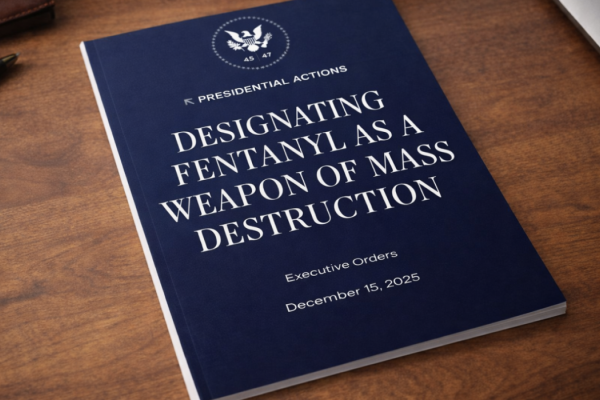23rd March 2022
In the longer term, a comprehensive shift in our approach to drugs is needed, from a failed model based on punishing people for drug use, to one based on pragmatism, and evidence of effectiveness, including comprehensive de jure decriminalisation and an exploration of models of legal regulation. However, even without changing the UK’s legal framework, there is a growing acceptance that we need, and could deliver, a better ‘public health approach to drugs’ to save lives and improve communities in the short term. What does that mean in practice at the local authority level it would need to be delivered at?
This template proposal being developed by Transform with input from a range of stakeholders outlines how acute, local drug problems can be tackled through a combination of innovative and well-established health interventions, supported by multi-agency partnerships and investment of modest, new short-term resources at the local authority, or city level. The approach set out offers long-term economic cost savings, reduction in crime, and the creation of healthier, safer communities for all. While it is UK focused, we hope it can inform approaches in other countries too.
This is a starting point for discussion - we don’t have all the answers. So we would value your thoughts on what such an approach should contain, its costs, barriers and benefits. You can talk to us privately, on Twitter or Facebook, or we can send a link to a shared document.
Introduction
We need a properly funded, whole system, health-led approach to turn around the lives of people who use drugs and make our communities, especially the most deprived, better for everyone.
In her recent Independent Review of Drugs, Dame Carol Black describes a dire situation with drug-related harms. Drugs are more potent, cheaper and more available. Use is rising, and drug-related deaths are at record levels. Street use and supply, discarded needles, drug-market related violence, and high levels of drug-related acquisitive crime blight many communities. Organised crime groups exploit vulnerable people while generating enormous profits from the illicit drug trade.
Conventional enforcement-led approaches cannot solve this problem. According to the Black Review, the available evidence suggests that enforcement crackdowns have little impact on the overall drug supply, and can sometimes have unintended consequences, such as increasing levels of drug market-related violence and the negative effects of involving individuals in the criminal justice system.
Recently announced additional funding and the new drug strategy, including the cross-departmental approach being adopted in the light of the Black Review, both provide a unique opportunity for innovation across the system. With the Government accepting Dame Carol’s call for drug offence diversion schemes (called ‘Tough Consequences OOCDs’ in the drug strategy), and for local authorities to commission a full range of harm reduction and treatment services, now is the time to trial a more comprehensive health-led approach to drugs.
A city and town level approach
While the international evidence shows health-led, multi-agency approaches work, we need UK-based pilots to explore how they operate within our social and legal context. Local authorities, towns and cities with high levels of entrenched drug-related harms provide an opportunity to carry out pilots of this kind (as the Government has already recognised to an extent with its Project ADDER programmes in some areas). Such pilots would allow us to explore new ways to tackle the most acute problematic drug use, which accounts for the majority of drug-related mortality, crime and violence.
Proposal overview
We propose a 2-year pilot project to reduce problematic drug use and related health and social costs through an integrated set of cost-effective, evidence-based measures. This programme will support people into appropriate harm reduction, treatment and recovery services, moving them away from the cycle of dependence, health harms, imprisonment and crime. Crucially, our proposal focuses on the 10-15% of high-intensity heroin and crack users who are not reached or adequately engaged by existing services, or for whom available treatment has not worked. This cohort is at high risk, consumes a disproportionate amount of heroin and crack (Swiss research suggests 30-60% of the illegal heroin market), and is responsible for a significant proportion of crime and social costs associated with drugs.
All proposed interventions are based on evidence of cost-effectiveness and best practice from the UK and internationally. Spending on health-led drug services is outstanding value for money - with every £1 spent leading to £4 of downstream savings in health and criminal justice expenditure, rising to up to potentially £8.38 per £1 spent for young people’s services. In addition to those who use drugs problematically, measures to divert, educate and engage ‘recreational users’ of all drugs towards appropriate support or information according to need will further increase beneficial impacts. In line with the Black Review Phase I and II, this will involve:
Diverting people caught with drugs for their own use (or minor supply offences) into education, treatment and support services, rather than arresting and prosecuting them. Evidence shows diversion reduces both reoffending and health harms while not increasing, and sometimes reducing use;
Existing treatment and support expanded and tailored to each individual, made immediately available, including specialist staff to address unsafe caseload sizes as flagged by Dame Carol
Enhanced and innovative harm reduction interventions that have a strong evidence base to engage and treat key target groups. These include diamorphine-assisted treatment clinics, and overdose prevention centres;
Closer integration with NHS healthcare services to address the significant health needs of this group of people are urgently needed. Early intervention and closer coordination are needed to treat serious and chronic physical health and mental health problems to reduce attendances at A&E, unscheduled care, and emergency admissions. This can ease local demands on the system and improve health outcomes for individuals;
Properly and promptly treating withdrawal in hospitals, avoiding discharges against medical advice to ensure that other medical conditions can be effectively treated, reducing complicated readmissions when conditions have become more serious;
Ensuring opioid agonist therapy (OAT) is promptly restarted following discharge from healthcare services (a significant proportion of overdoses are shortly after leaving hospital);
Ensuring coordination with prisons to continue OAT on both admission and release;
Coordination with housing services, including hostels that tolerate use with protocols to reduce risk, and models like Housing First that recognise many people often need secure accommodation before they can address the reasons for their problematic use;
Coordination with education, employment and other services offering routes into a long term, improved quality of life for clients. This approach should be integrated into the response to other overlapping public health challenges within an area including but not limited to alcohol, tobacco, knife crime and domestic violence.
The project will involve a range of stakeholders working in partnership, with investment of central government funding over and above existing drugs service budgets, and Home Office licensing or agreement to facilitate pilots of key interventions. Longer term, additional funding, particularly from stakeholders who see reduced demands or costs as a result of this project would also be sought to ensure financial sustainability of successful interventions.
Delivering these interventions simultaneously and systematically, will allow synergies to be rigorously assessed for both impact and value, including the extent to which they reduce intransigent drug problems within a defined region. A comprehensive evaluation framework will help inform the new approach to drugs envisaged by the Black Review, ensuring any increased funding delivers the best outcomes.
Suggested Project Elements
Coordination: Dedicated project coordinator from the local Public Health team, with multi-agency support including working in conjunction with Health and Wellbeing Boards etc.
Evaluation: local academic institution to evaluate outcomes on an agreed set of health, criminal justice and community wellbeing indicators, including pre- and post-intervention measures.
Interventions: Many areas will have some of those listed below, so approaches will need tailoring to the local situation.
Costs: The costs listed below are indicative, and will vary according to what services are already in place, scale of target populations etc
A Public Health Approach to Illegal Drugs | ||||
Measure | Description | Lead agency | Legal issues | Notes |
Dedicated Project Coordinator | To coordinate and drive delivery of all elements of the project | Public Health | None | Staff member £30k pa |
Policing, Probation and Prisons | ||||
Nested drug offence diversion schemes
| PCC and Police Force with treatment providers, Universities and colleges | None | West Midlands police pre-arrest diversion scheme cost £60-70k pa for 2400 people, or Thames Valley Police £150k pa for 4500 adults. School and youth schemes ~ £30k pa | |
Voluntary assessments in custody referral programme | Already used in some areas | Local treatment providers | None | Coercive approaches to treatment have a poor record, and risk being unethical. Supportive, voluntary approaches are preferable |
Probation Services basing support staff in Diamorphine (heroin) Assisted Treatment (DAT) Programme | See below for DAT | Probation services with DAT provider | None | Has proven very successful in Middlesbrough with many patients completing probation orders for the first time |
Prison continuity of care programme | All prison leavers given same day access to treatment to ensure no break in support, and take home naloxone | Prisons, treatment services | None | |
To ensure existing DAT patients have continuity of treatment. (See below for DAT) | Prisons, DAT providers | Would require Home Office licensing | Used successfully in other countries incl. Switzerland | |
Enhanced Harm Reduction and Treatment Measures | ||||
Near fatal overdose engagement team | Outreach team to engage individuals identified via hospitals, treatment services, ambulance services etc until overdose risk is reduced/eliminated | Public health Treatment Provider | None | 1-3 posts @ £30k |
Revised and expanded prescribing |
| Treatment Provider | None | Increased staffing and prescribing budget Benzodiazepine prescribing budget, potential stimulant prescribing budget |
Diamorphine Assisted Therapy (DAT) provision (aka Heroin Assisted Treatment) |
| Treatment Provider | None | Costs will depend on model used - ~ £15k per patient pa plus set up costs |
Expansion of Needle and Syringe Programmes (NSP) | Optimise provision of NSP and expand to provide safer inhalation kits to engage stimulant users for pipe provision | Public Health and service delivery team, pharmacies | Provision of pipes for drug inhalation would currently require a formal agreement with local police | Used successfully in Canada and Ireland |
Overdose Prevention Service (OPC) (aka Supervised Injecting Facility) |
| Suitable provider Local hospital + treatment provider | Police and stakeholder legal agreement, or explicit support from Home Office | Dependent on location and scale. £200-300k per annum for city centre pilot + additional £100k pa if running a mobile, or hostel based, extension to the core service (NB very large facilities eg 13+ injecting booths would cost substantially more) |
Expanded Naloxone programme | Widening current offer via Treatment services; Hospital A&E; Peer programme; Police; defib units; Staff in fast food restaurants/transport hubs; Hostels; Pharmacies Custody and prison release programmes | Public health and police Service providers, harm reduction groups, health services in contact with people seeking medical care etc | None for most extended provision | 2000 IV Kits @ £18; 100 nasal spray kits @ £30 Team of peer trainers and management £80k? Promotional activities £4k Total ~ £150k |
Expanded lived experience staff and support provision | Explore utilising the unique insights and peer-to-peer identification, engagement and support opportunities that employing people with lived experience offer | Public Health Suitable providers | None | £30k per new staff role, incl supervision/support |
Town centre drug checking service | Co-located with OPC, or nearby to allow people who use drugs to know what they are taking, whether recreationally or because of dependence issues | Public health with local treatment services and specialist providers eg The Loop | Home Office licence desirable, potentially essential depending on area. Would require support from Police | £50-£75k pa for one day per fortnight checking service |
Combining information from a range of sources including drug checking services, drugs obtained specifically for alert system, police and services | Public health with local treatment services and specialist providers eg The Loop | May need local MoU with police esp around drugs obtained for alert service intel | Already in place in some areas of the UK e.g. Manchester, North Yorkshire | |
Town Centre night time ‘Safe Space’ | To help those who feel unwell or need assistance. E.g. medical support for alcohol/other drugs, but also social issues eg women detached from group of friends while drunk etc | E.g. St John Ambulance | West Midlands PCC/Birmingham Business Improvement District funds an example The Safe Space, Portsmouth also has one | |
Housing and consideration for active use | ||||
Tolerating use in hostels + Housing First |
| Local hostels and housing providers | Police, local authority and provider protocols on tolerated use in housing and hostels | Hostels: staff time to tailor protocols, Naloxone provision and training; pilot respiration detectors/Never Use Alone Apps. ~£20k first year, ~£5k second year Housing First: Costs depend on what is currently planned in the area |
Medical and mental health treatment | ||||
Trauma therapy/ emotional resilience support | Mental health workers to support substance users to develop emotional resilience before entering trauma therapy | Mental health trusts and charities | None | Psychologist and nurse practitioners |
Increased access to high quality general medicine | Access to Shared Care or dedicated specialist GP service for substance users (NB patients at Foundations in Middlesbrough are 80% less likely to suffer drug related death). Address unmet general health needs. | Local health service providers/Public Health GP and treatment services | None | Additional funding to increase GP and nurse time |
Increased Care coordination and interventions offer | Increased capacity in care coordination team; widen professional skill mix in specialist intervention delivery teams | Public health | None | Psychologists, Psychotherapists and nurse specialists |




